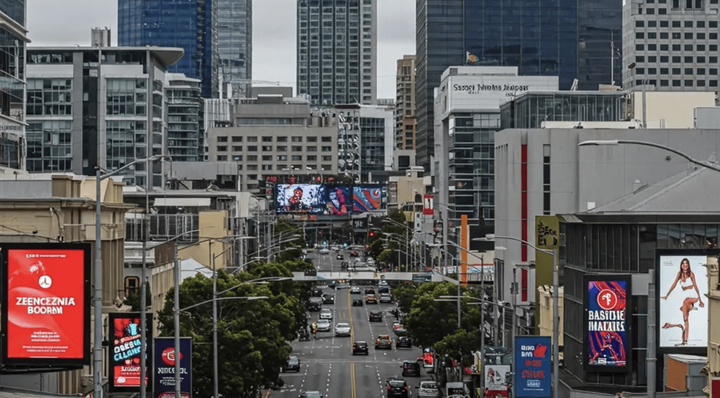Understanding Perth’s Digital Out-of-Home (DOOH) Audience
Body
 Introduction
Introduction
Digital Out-of-Home (DOOH) advertising is gaining strong traction in Perth, offering brands a powerful way to connect with the public in real-time. As the city continues to grow and modernize, understanding who sees these ads — and how they interact with them — is essential for making smarter media decisions. This article explores the main DOOH audience segments in Perth and how advertisers can align their messaging to improve engagement and performance.
Who Makes Up the DOOH Audience in Perth?
Perth’s population is diverse, and so is its DOOH audience. Digital screens are located in high-traffic areas across the city, and they reach different types of people depending on the location, time of day, and local activity. Here are the key audience segments engaging with DOOH in Perth.
1. Daily Commuters
Commuters form one of the largest and most consistent DOOH audiences. These include office workers, students, and professionals who travel between suburbs and the city center each day. They pass by digital screens on major roads, at train stations, and in high-traffic corridors. Most commuters follow regular routines, which means advertisers can schedule ads for peak times — such as early mornings and late afternoons — when traffic and footfall are at their highest.
2. Shoppers and Leisure Seekers
Another important audience is made up of people visiting shopping centers, restaurants, or entertainment venues. These individuals are usually more relaxed and have time to pay attention to advertising. Shopping precincts, weekend markets, and lifestyle hubs attract people looking for fashion, food, and leisure experiences. DOOH ads in these areas benefit from high dwell times, meaning viewers spend more time in front of the screens and are more likely to remember what they see.
3. Event and Tourist Audiences
Perth regularly hosts events, festivals, and exhibitions that bring in both locals and visitors. From concerts at RAC Arena to cultural events in Northbridge, these occasions bring unique short-term audiences into the city. Tourists also form a valuable DOOH segment, especially around key locations like Elizabeth Quay, Kings Park, and Perth Airport. Digital billboards placed near these zones offer high visibility and can be used to promote time-sensitive offers, local attractions, or city-wide campaigns.
What Drives Engagement in DOOH Campaigns?
Effective DOOH campaigns don’t just depend on where the screens are placed — they also depend on what is shown and when. Understanding audience behavior helps advertisers design messages that are timely, relevant, and easy to understand.
Simple Messaging for Busy Viewers
Many DOOH viewers are on the move. That means messaging needs to be short, clear, and visually strong. A good DOOH ad will use bold text, high-contrast images, and a direct call-to-action to catch attention within seconds.
Timing Matters
One of the advantages of DOOH is that it allows advertisers to change content based on the time of day. For example, ads for coffee or breakfast can be shown during morning hours, while dinner promotions can run in the evening. Targeting ads to match the routine of the audience increases relevance and impact.
Adapting to Movement Patterns
By analyzing how people move through Perth during the day, advertisers can plan more effective campaigns. For example, showing ads in one location during the morning and another during the evening can reach the same person twice — first as a teaser, then as a follow-up. This strategy helps build stronger connections and improves recall.
Conclusion
Digital Out-of-Home advertising in Perth is most effective when it’s built around audience behavior. By understanding who is seeing the ads — from daily commuters to shoppers and tourists — brands can craft messages that align with real-world habits. With the flexibility of DOOH formats, businesses can adapt their content to suit the time, place, and audience more precisely than ever before. Whether it's targeting professionals on the freeway or visitors near cultural venues, smart DOOH campaigns deliver measurable value. For any business looking to build visibility, Perth outdoor advertising offers the reach, relevance, and real-time potential needed in today’s fast-moving media landscape.













Comments